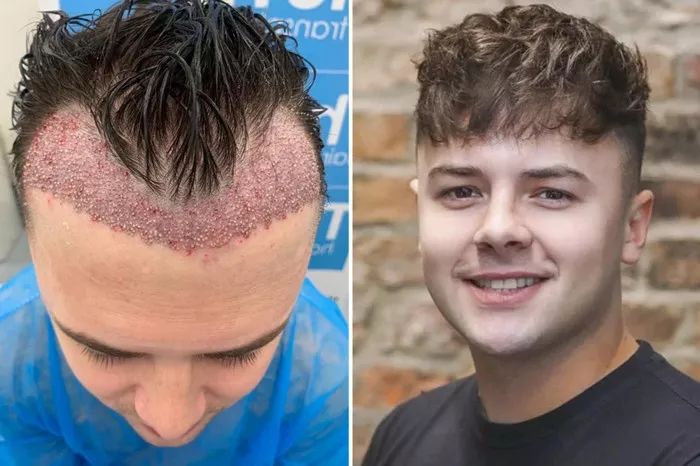Undergoing a hair transplant is a significant step toward regaining a fuller head of hair and boosting self-confidence. However, the journey to a successful hair transplant can sometimes involve an unexpected phase known as “shock hair loss.” In this article, we’ll delve into the details of shock hair loss after a hair transplant, its causes, its effects, and how individuals can manage this temporary setback on their path to restored hair.
What is Shock Hair Loss?
Shock hair loss, also referred to as telogen effluvium, is a common occurrence after a hair transplant procedure. It involves the temporary shedding of existing hair in both the donor and recipient areas of the scalp. This phenomenon can be distressing, but it’s important to note that it’s often a natural part of the healing process.
Causes of Shock Hair Loss
Shock hair loss, also known as telogen effluvium, can be triggered by various factors that disrupt the hair growth cycle. Common causes include:
1. Surgery:
Physical stress from surgeries, especially those involving anesthesia and significant recovery, can lead to hair shedding a few months later.
2. Illness or Fever:
Severe illnesses, infections, or high fevers can interrupt the hair growth cycle.
3. Emotional Stress:
Emotional stress, such as a traumatic event or emotional upheaval, can impact hair growth.
4. Rapid Weight Loss:
Drastic weight loss, crash diets, or nutritional deficiencies can cause hair shedding.
5. Medications:
Certain medications, like chemotherapy drugs or certain anticoagulants, can trigger hair loss.
Who Experiences Shock Alopecia?
Shock alopecia, also known as telogen effluvium, can affect anyone regardless of age or gender. It’s a temporary condition that occurs when the hair growth cycle is disrupted due to physical or emotional stress. People who have recently experienced significant stressors such as surgery, illness, emotional upheaval, or dramatic weight loss are more prone to experiencing shock alopecia. It can also occur after childbirth or during periods of hormonal fluctuations. While it’s a common phenomenon, the extent and duration of hair loss can vary. In most cases, hair growth resumes once the underlying stressor is resolved.
Will there be shock alopecia after hair transplantation?
Shock alopecia can occur after hair transplantation, especially in the donor area where hair follicles were harvested. The trauma of the transplantation process can temporarily disrupt the hair growth cycle, causing some transplanted and adjacent hairs to enter the telogen (resting) phase. This can lead to shedding a few weeks to a few months after the procedure. However, it’s often a temporary phenomenon, and the hair usually regrows as the hair growth cycle normalizes. Proper post-operative care and following your surgeon’s instructions can help minimize the impact of shock alopecia after hair transplantation.
Treating Shock Alopecia After Hair Transplantation
Treating shock alopecia after hair transplantation involves understanding that it’s often a temporary phase. Here’s how to manage it:
1. Be Patient:
Shock-induced shedding is typically temporary, and hair regrowth is expected once the follicles enter the anagen (growth) phase again.
2. Follow Post-Op Care:
Adhere to the post-operative care instructions provided by your surgeon. This includes avoiding strenuous activities, protecting the scalp from sun exposure, and proper cleansing.
3. Healthy Lifestyle:
Maintain a balanced diet, stay hydrated, and manage stress to support overall hair health.
4. Minoxidil:
In some cases, your surgeon might recommend using minoxidil to promote regrowth and accelerate the return to the anagen phase.
5. Consult Your Surgeon:
If you have concerns, discuss them with your surgeon. They can provide guidance and monitor your progress.
Remember, while shock alopecia can be disconcerting, it’s often a natural part of the hair growth cycle and doesn’t necessarily indicate a problem with the transplant’s success.
Conclusion
Shock hair loss after a hair transplant, although unsettling, is a common occurrence that affects many individuals. Understanding the reasons behind it, trusting the healing process, and following post-operative care instructions are key to managing this temporary phase. By maintaining realistic expectations, staying patient, and communicating openly with your surgeon, you can navigate through shock hair loss and move closer to achieving your desired results—a natural and fuller head of hair that boosts your self-confidence.


